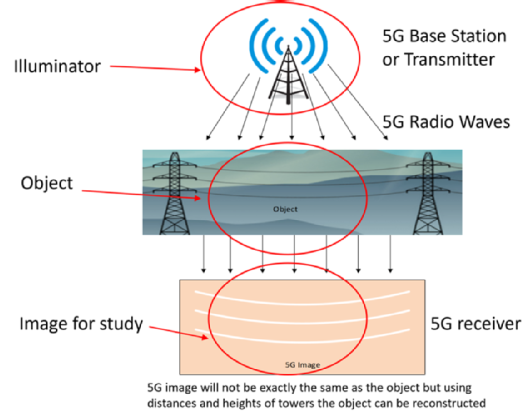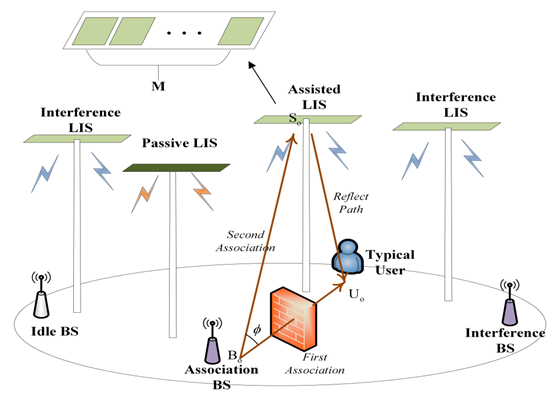Wireless Communications
1. TITAN Platform Driving The Ultimate Connectivity
Funding Body: EPSRC (May 2023- April 2026), led by University of Strathclyde (UK)
PI: Prof. Gan Zheng
The research of the TITAN platform is geared towards the ultimate network of networks and is structured in six strongly interconnected lighthouse projects which reflect all network elements - 1) the core, 2) optical fibre, 3) radio frequency (RF) including cellular and wireless networks, 4) emerging optical wireless networks for access and backhaul, 5) non-terrestrial networks involving satellites, aerial and underwater networks, and finally 6) quantum communication networks.
The research on the core network focuses on a new architecture and artificial intelligence (AI) techniques that enable the integration of multi-access technologies for a seamless end-to-end service delivery by considering advanced requirements in terms of data rate, latency, security and energy efficiency. TITAN will conduct novel research that aims at orchestrating the different existing and emerging RF networks (3G, 4G, 5G, 6G, WiFi, Bluetooth, etc.) towards a single network by developing techniques that would optimally select the respective RF network, or networks, and develop the respective protocols to enable a seamless end-to-end connection. Because of the undisputed need for new spectrum in future networks, TITAN will crucially include new networks that are built around the terahertz and optical spectrum. Since these networks will benefit from new intelligent reflecting surfaces as part of a new network element, TITAN will include research on the networking aspects and the integration of reconfigurable intelligent surfaces (RIS) by building on the work on AI and machine learning (ML) developed for other parts of the network, such as edge and core. Optical fibre networks are an important element of a network of networks. Therefore, TITAN will address research questions on the optimum integration of advanced optical fibre technologies such as hollowcore fibres and new agile transceiver technologies to support key network requirements such as latency. Universal service availability and what is described as the 'digital divide' represent an increasing societal challenge. Therefore, TITAN will conduct critical research on the integration of non-terrestrial networks which include aerial, satellite and underwater networks all geared towards a seamless end-to-end service provision which is achieved by the holistic approach of TITAN. Lastly, TITAN will meaningfully integrate new quantum network technologies alongside conventional networks and will provide important guidance on the optimum use of both fundamental networks. An important consideration of TITAN is the extraction of sensing information from networks. All network elements have particular features and, in conjunction with ML techniques, important side information can be extracted. TITAN will investigate this capability for each network segment, but crucially brings the independent sensing information together to achieve an ultra-cognitive network which exhibits the highest level of self-x (configuration, healing, automation, optimisation).
2. Overhead Line Sagging Monitoring Using 5G Signals
Funding Body: UK National Grid Project (2022-2024), collaborating with Durham University (UK), with a total budget of £285K.
PI: Dr. Tianhua Xu
All overhead lines in the GB transmission network must maintain statutory clearances to ground, roads and other objects. To maintain these clearances the line sag needs to be monitored. Also, if the line sag can be monitored easily and with great frequency (dynamically), it is possible to provide valuable inputs to the thermal rating of the overhead line. Current methods use either sensors installed on the line to directly measure temperature/sag or weather stations nearby to indirectly calculate temperature/sag. Sensor installation generally requires circuit outage and demands highly skilled engineers as well as access to land where the lines and towers are located. The access is sometimes very restricted and hence brings many challenges when apply. Although sensors can achieve high accuracy of monitoring, the cost is high. Weather stations do not require sensor installation but have similar limitations of installing equipment on the tower and have relative low accuracy. This project aims to design a new method by exploiting the fifth generation (5G) cellular signals to directly monitor and measure the line sagging but without sensor installation on the line.

3. Mm-Wave MIMO Transmission and Coverage Enhancement Using Intelligent Reflecting Surface
Funding Body: Royal Society International Exchanges 2021 Cost Share (NSFC), April. 2022-March 2025, £12,000
PI: Dr. Yongxu Zhu
Mobile communications continue to interact with each other. With 5G being rolled out around the world, exciting, new use cases such as augmented reality (AR) and virtual reality (VR), are emerging to give people new immersive experience. Tackling this challenge will need more than upgrading the base stations and the mobile devices but will require shaping the wireless environment to provide more favourable propagation conditions. The proposed research programme aims to achieve that by investigating the use of the combination of the Intelligent Reflecting Surface (IRS) technology and the millimetre-wave (mmWave) frequency band. IRS utilises relatively low-cost hardwares installed at strategic locations to help shape the environment to support wireless communications. The use of mmWave bands serves to create more directional propagation environments to maximise the benefits of IRS.

Y. Zhu, G. Zheng and K. -K. Wong, "Stochastic Geometry Analysis of Large Intelligent Surface-Assisted Millimeter Wave Networks," in IEEE Journal on Selected Areas in Communications, vol. 38, no. 8, pp. 1749-1762, Aug. 2020, doi: 10.1109/JSAC.2020.3000806.
